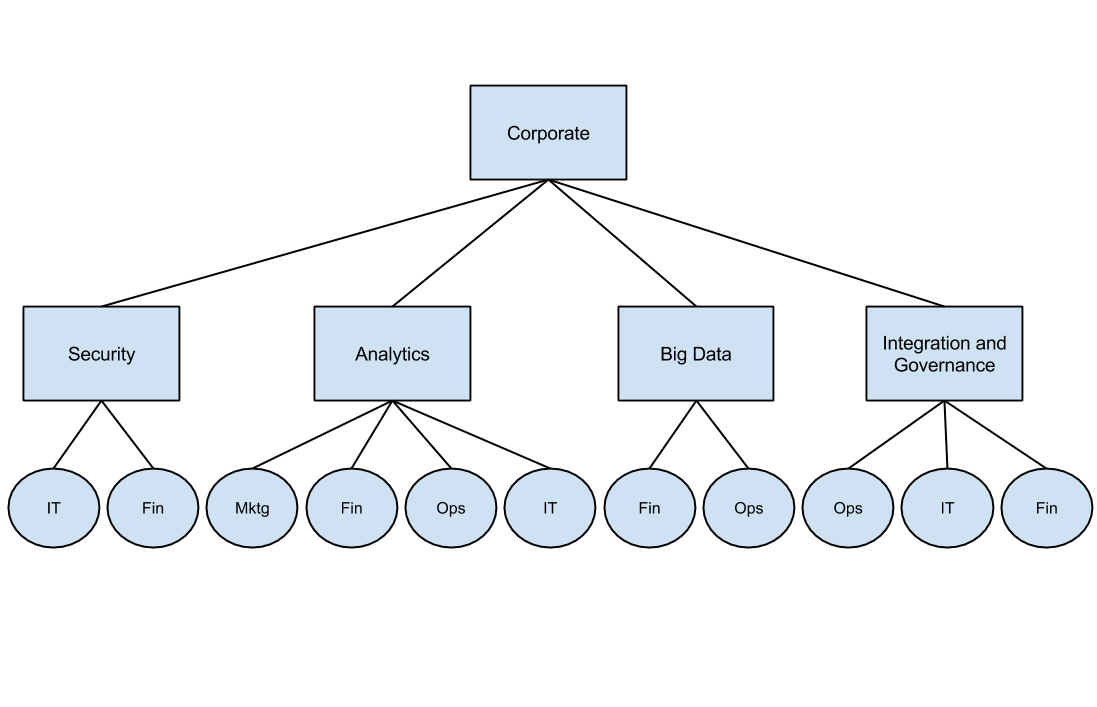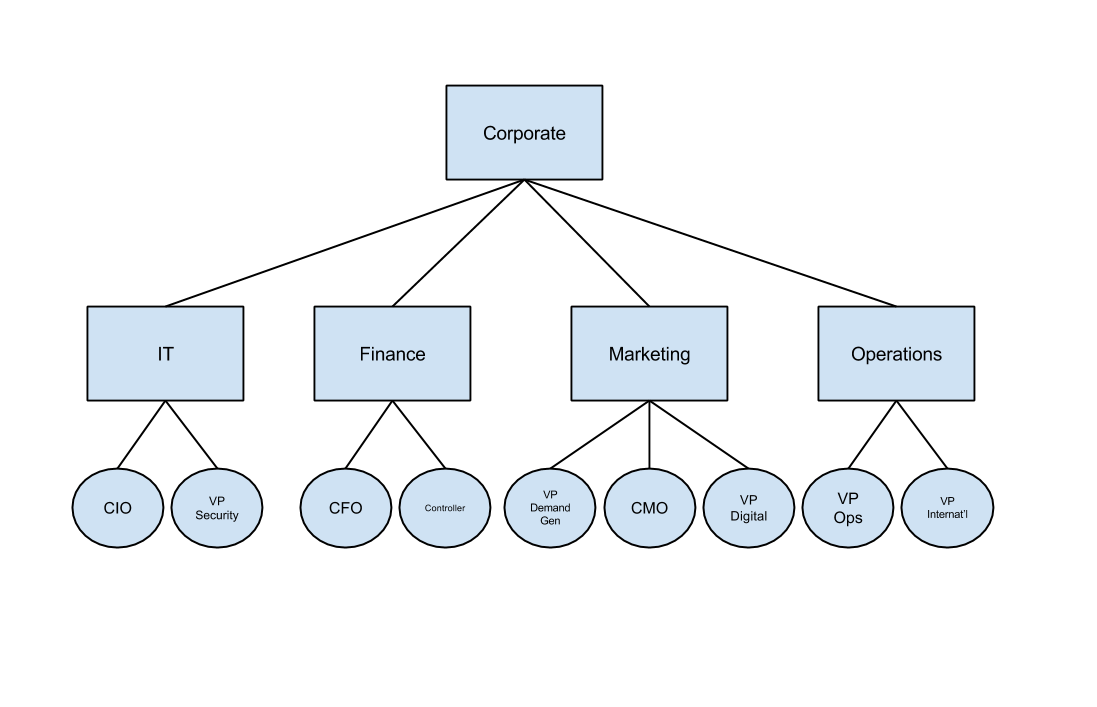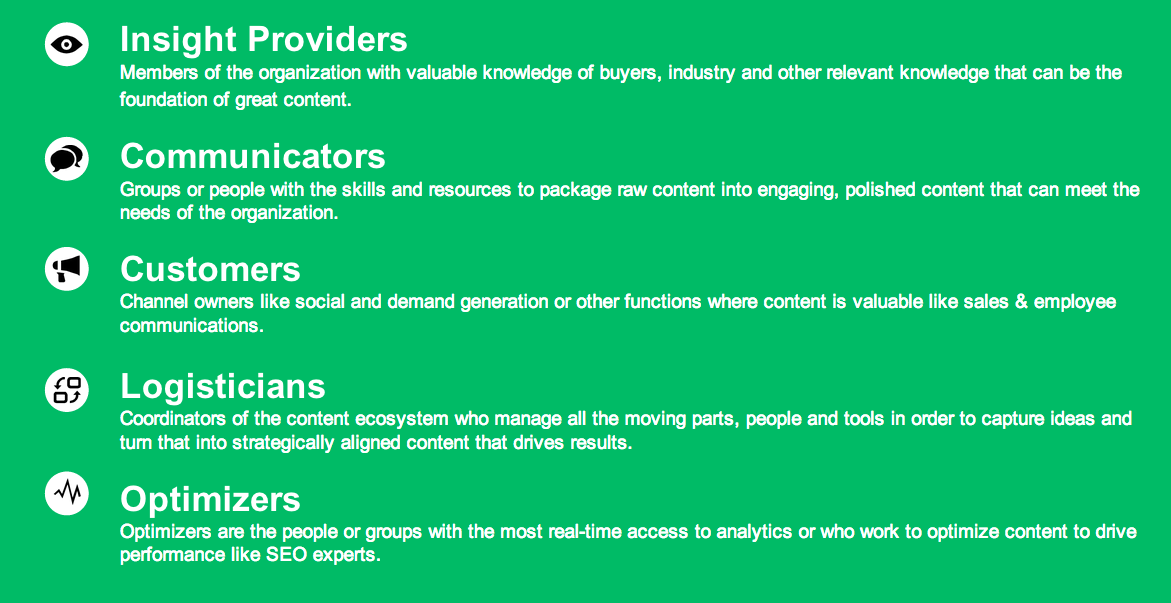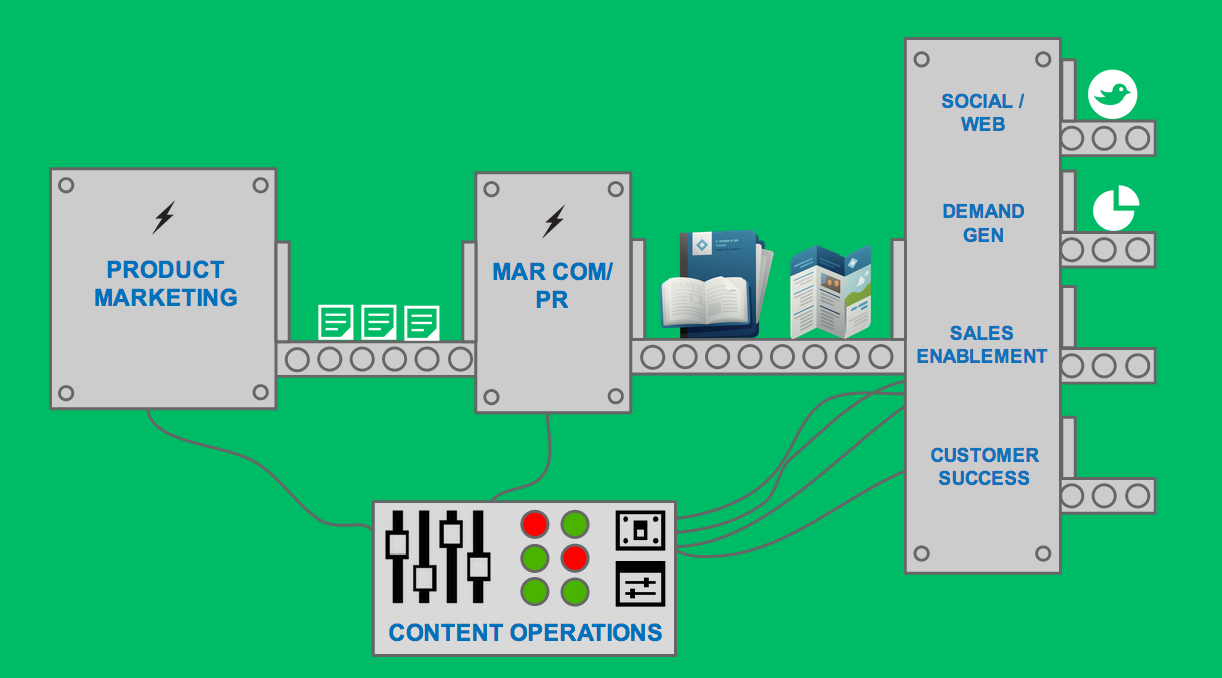 The Marketing department that’s existed inside traditionally sales-driven B2B companies is disappearing. The days where Marketing was a cost-center or a service provider to the rest of the organization—particularly to Sales—are passing by.
The Marketing department that’s existed inside traditionally sales-driven B2B companies is disappearing. The days where Marketing was a cost-center or a service provider to the rest of the organization—particularly to Sales—are passing by.
Marketing is now a revenue generator. But adapting to this new role is a significant challenge for CMOs and their teams.
Actually, it’s the biggest challenge. In a recent Exact Target and Deloitte study, “Bridging the Digital Divide,” CMOs identified “Greater Revenue Growth Responsibility” as the top change they’re contending with in the digital marketing era.
CMOs—and their teams—need to learn how they should align within their Marketing departments to best respond to these new challenges.
Aligning Externally
If Marketing is to be a revenue generator, they need to get tight with Sales. This is a major effort. It’s spawned an entire set of best practices around Sales and Marketing alignment.
If Marketing is to be a revenue generator, they need to get tight with Sales.
Essentially, a set of rules and processes around how Sales and Marketing were to interact in creating revenue were established, including definitions on different types of leads and opportunities (the various MQL, SAL, etc. acronyms) along with service level agreements that define how the two organizations should hold each other accountable.
Also required were technologies that could measure and manage this process. This came in the form of marketing automation tools (e.g. Eloqua, Marketo, Pardot, etc.). These tools could score leads and determine how they moved through a pipeline, ensuring Marketing fulfills it’s obligations to Sales.
Aligning Internally
Marketing has made a great leap forward aligning with Sales. Its own internal alignment remains unresolved. Too often, Marketing still treats itself as a cost center.
“The core fabric of marketing execution will be ripped up and rewoven by data and marketing technology.”
CMOs know this needs to change. In a 2014 study of CMOs, IDC found that the top CMO challenges were “how do we increase the amount of qualified leads in the pipeline?” and “how do we re-prioritize and do more with less?” Clearly, they’re wrestling with how to organize their teams around revenue-generating activities.
So much so, that IDC noted it, stating that “by 2020, marketing organizations will be radically reshaped. The core fabric of marketing execution will be ripped up and rewoven by data and marketing technology…The marketing function in leading companies will be reorganized along three key components: content, channels, and consumption (data and analysis), getting rid of traditional silos.”
Intra-Marketing Alignment
Marketers obviously can’t wait until 2020. But how do you adapt without undergoing another crippling reorganization?
We’ve had the privilege to work with hundreds of world-class marketing departments in their efforts to build content operations that drive revenue. And these marketers are aligning Product Marketing, MarCom, Social and Web, PR, Demand Gen, Sales Enablement, Field and Customer Marketing, and Marketing Operations teams around content, using it at every stage of the customer journey to produce real revenue. As a result, we’ve seen firsthand what works and what does not work.
A model has emerged we call Intra-Marketing Alignment. It’s based on the consensus that content lies at the very heart of what marketing does, how when marketing teams work together as a Content Operation, they are best positioned to achieve their goals. It’s not a reorganization, but rather a set of best practices on how existing teams can collaborate and be accountable to one another. Specifically the Intra-Marketing Alignment model involves:
Intra-marketing alignment is not a reorganization.
- Content Teams
- Content Team Participants and Roles
- Content Operations Knowledge
- Content Operation Dynamics
Content Teams
At many companies the marketing organization may be split up by product lines, divisions, etc. The idea is to break up large teams into smaller, more manageable units.
But as a result, when we work with companies to form content teams, their first instinct is to organize around product lines. That would look roughly like the diagram below.

In this example, the company is a software provider with four specific product lines: Security, Analytics, Big Data, and Integration and Governance. The company sells to four departments inside its customers: IT, Finance, Marketing, and Operations.
“The Content Operation should align around buyer personas rather than product lines.” @tobymurdock
One of the core tenets of Content Marketing is customer centricity. We’re creating content to address the needs of our customers, not our own organizations. We’re creating an effective Buyer Journey, and the Sales Process comes second. So the Content Operation should align around buyer personas rather than product lines. Using the example above, we would align content teams around clusters of buyer personas represented by the persona’s department within their organization so it looks like the graph below.

In this model, we have four content teams: IT, Finance, Marketing, and Operations. Each team should focus on 2-4 related Buyer Personas. This ensures a cohesive, unified go-to market strategy. A CIO prospect doesn’t get different and even contradictory messaging from different internal product lines (e.g. Security, Analytics, and Integration and Governance). Instead the product lines work together, pooling their resources to reach the single persona.
Content Team Participants & Roles
Once the broad Content Team is outlined, marketers then need to identify who should serve on each team and what role each participant will play.
In an effective Content Team, five principal capabilities are required: Insight Providers, Communicators, Customers, Logisticians, and Optimizers. They’re described in the graphic below.

A Content Operation is like a machine: a set of participants who understand their role and can work together in a repeatable, scalable process that outputs effective content consistently and predictably. The various capabilities work with one another according to the following model:
What Is Intra-Marketing Alignment? by @tobymurdock
The Insight Providers produce the raw materials of insight. This could be the rough draft (work document) of an eBook or whitepaper. This comes from the deep understanding that Insight Providers have for a particular segment (ideally a set of personas).
This raw material is then passed on to the Communicators. They transform the rough eBook into a finished product that is edited, articulate, and polished with graphics. They also break down this pillar piece into smaller derivative assets (for more on this process, see our eBook) such a blog posts, videos, presentations, webinars, and emails.
The Communicators then deliver these completed assets to the internal Customers. These are the various groups that utilize content at various levels of the funnel to achieve business outcomes such as traffic, leads, and revenue.
Logisticians manage the process components of the operation, coordinating the interaction of the other participants. And Optimizers analyze the metrics of the operation so that all can gain insight on how to improve its performance.
Here’s a graphical display of that model.

The individuals and groups who would be applied to this model adjusts for the unique needs of every organization. But at Kapost the most common model we see is shown in the diagram below.

Product Marketing serves as the Insight Provider with its deep knowledge of different customer segments. MarCom or PR teams utilize their communications skills in the Communicators function. Internal Customers are Social/Web at the top of the funnel, DemandGen in the middle, Sales Enablement at the bottom, and Customer Success/Account Management post-sale.
The Content Operations team houses the Logistician and Optimizer function. These roles are staffed by whichever department is most supportive of the Content Operation effort, usually MarCom or DemandGen.
It’s important to reiterate that this internal alignment is achieved without reorganization. Instead this model ties together how existing departments interact. Each of these stakeholding groups should be represented on a Content or Editorial Board, which collectively manages the Content Operation.
Content Operations Knowledge
Once different groups and participants are organized, they need to be armed with knowledge of how to perform their role within a Content Operation. We have identified the seven core best practices of a Content Operation:
The links above give deep description around the various best practices, each of which is a subject to itself. But for purposes of this post, it’s important to highlight the need for participants in the Content Operation to gain this best practices knowledge.
Content Operation Dynamics
As a Content Operation forms, there are certain critical dynamics that need to materialize in order for the collaboration to be effective: unity, visibility, accountability, and insight.
Unity
For a Content Operation to be effective, you need unity, visibility, accountability, and insight.
First, we have unity. For too long different marketing teams have been producing content in their own silos, giving inadequate efforts and finding unsatisfactory results. In order to create content that is compelling enough to win the attention, trust, and business of the empowered buyer, those silos must unify their efforts.
This unity is not just across people. The content itself must unify—through planned campaigns centered on pillar content that can be re-purposed into derivative assets that satisfy the needs of all groups and channels. Systems and channels must unify—the different silos need to work not only in their own marketing automation, CMS, or webinar tools in isolation, but bring cohesion to the activities in those different tools so that the unified content is distributed in an aligned way across channels.
And a single plan, putting forth a single message, must unify all of this disparate efforts into a one operation.
Visibility
For all of these stakeholders to unify their efforts, there needs to be clear visibility into what’s happening across the entire content operation. What is the plan? What are the tasks? When are they due? What content do we have? Where is it? How do I search for it?
A content operation that is regularly stymied by these sort of questions cannot succeed. All participants need visibility into these elements of the content operation.
Accountability
Another important issue in a Content Operation is how “content” is often not the “day job” for most participants. They contribute to the content effort in addition to their other responsibilities. And these various stakeholders are spread across many departments and groups all across the org chart. There is no single manager who is directing everyone. Thus, for the Content Operation to function, all of the stakeholders need to be held accountable to performing their assigned roles and tasks. Clear, detailed plans and responsibilities need to be held up in order to enforce accountability for all involved.
Insight
Lastly a Content Operation needs insight into how it is performing. Only this insight can provide the feedback loop that refines the strategy, improves performance, and achieves success. Specifically, insight is required in three areas:
- Operational performance: How is the Content Operation itself performing internally? Are campaigns and assets launching on-time? Where are the bottlenecks?
- Cross-channel performance: Marketers must operate in so many channels now to connect with their buyers, thus Content Operations needs a consolidated view of how their content is performing across all of those channels.
- Revenue performance: Most content metrics—like page views, number of comments—are helpful, but are still relics from content’s publisher heritage. Content Operations need to understand how content is performing in winning buyer’s attention and driving revenue.
Metrics are the capstone to a Content Operation which generates the quality and quantity of content marketing departments need to meet their demand generation goals. But the Operation begins with an understanding that just as Marketing has aligned externally with Sales, it must align internally around its new revenue responsibility.
This focus on Intra-Marketing Alignment and a Content Operation is what CMOs and their teams need to meet their new challenges.
Get the B2B Play-by-Play in Aligning Your Teams
Learn more about how to create a stellar team to optimize your marketing strategies with the B2B Marketing Playbook.

